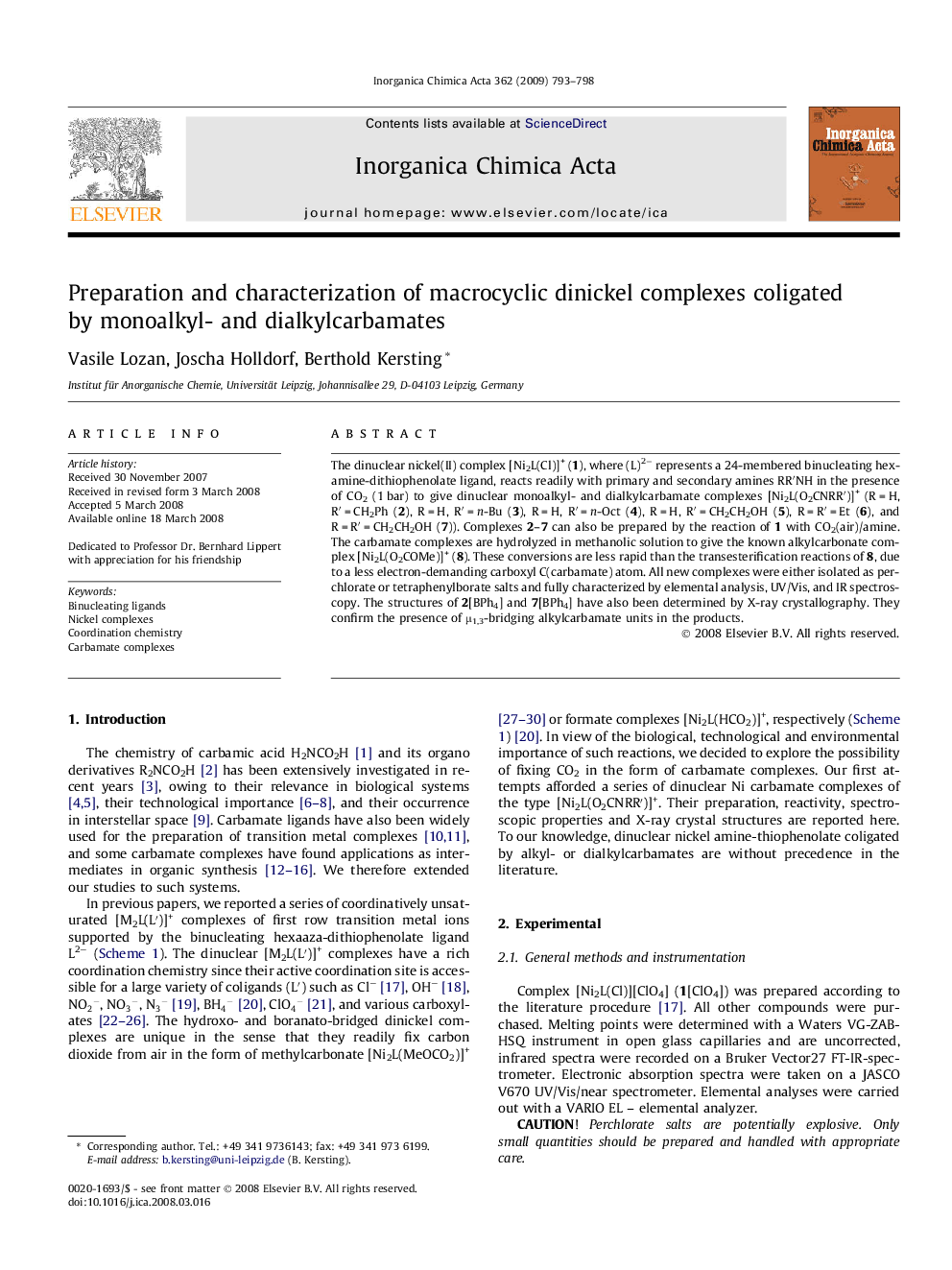| Article ID | Journal | Published Year | Pages | File Type |
|---|---|---|---|---|
| 1308831 | Inorganica Chimica Acta | 2009 | 6 Pages |
The dinuclear nickel(II) complex [Ni2L(Cl)]+ (1), where (L)2− represents a 24-membered binucleating hexamine-dithiophenolate ligand, reacts readily with primary and secondary amines RR′NH in the presence of CO2 (1 bar) to give dinuclear monoalkyl- and dialkylcarbamate complexes [Ni2L(O2CNRR′)]+ (R = H, R′ = CH2Ph (2), R = H, R′ = n-Bu (3), R = H, R′ = n-Oct (4), R = H, R′ = CH2CH2OH (5), R = R′ = Et (6), and R = R′ = CH2CH2OH (7)). Complexes 2–7 can also be prepared by the reaction of 1 with CO2(air)/amine. The carbamate complexes are hydrolyzed in methanolic solution to give the known alkylcarbonate complex [Ni2L(O2COMe)]+ (8). These conversions are less rapid than the transesterification reactions of 8, due to a less electron-demanding carboxyl C(carbamate) atom. All new complexes were either isolated as perchlorate or tetraphenylborate salts and fully characterized by elemental analysis, UV/Vis, and IR spectroscopy. The structures of 2[BPh4] and 7[BPh4] have also been determined by X-ray crystallography. They confirm the presence of μ1,3-bridging alkylcarbamate units in the products.
Graphical abstractThe ability of the complex [Ni2L(Cl)]+ where L represents a macrocyclic N6S2 ligand to fix CO2 in the form of carbamato ligands is described. A series of complexes of the type [Ni2L(O2CNR2)]+ were obtained. Their preparation, reactivity, spectroscopic properties, and crystal structures are reported.Figure optionsDownload full-size imageDownload as PowerPoint slide
